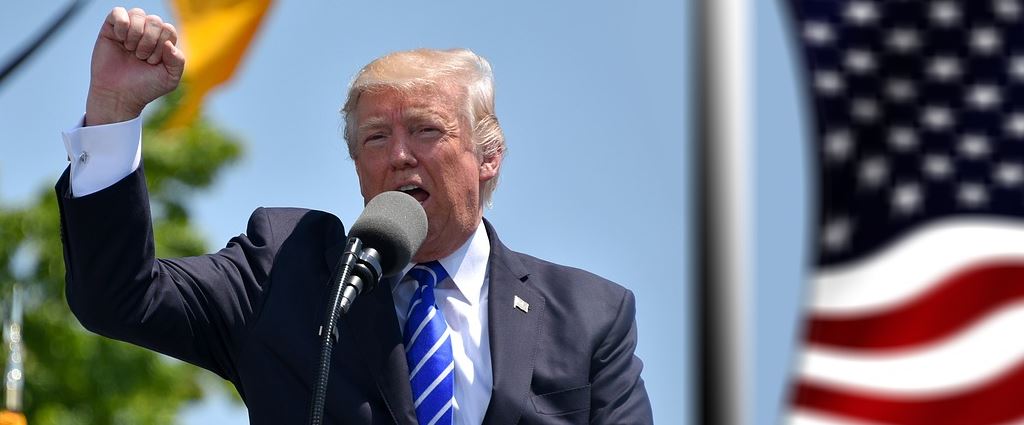By Tony Clifford
 In February 2018, President Donald J. Trump imposed 30% tariffs on imported solar modules (the infamous Section 201 tariffs) in an attempt reputedly to bring manufacturing jobs back to the United States. Solar industry advocates warned the tariffs would bring projects to a screeching halt and irreparable damage would be done to one of the fastest-growing segments of the U.S. economy.
In February 2018, President Donald J. Trump imposed 30% tariffs on imported solar modules (the infamous Section 201 tariffs) in an attempt reputedly to bring manufacturing jobs back to the United States. Solar industry advocates warned the tariffs would bring projects to a screeching halt and irreparable damage would be done to one of the fastest-growing segments of the U.S. economy.
Now those tariffs are under a legally required “mid-term review” by the U.S. International Trade Commission (ITC), after which the ITC will (before February 2020) recommend to President Trump whether to continue them or not. Let’s see whether the predictions of either side came to pass.
Was There A Boom In U.S. Solar Manufacturing Jobs?
The short answer is that is no. The Solar Foundation’s National Solar Jobs Census 2018 reports that 3,159 solar manufacturing jobs were lost between November 2017 November 2018. While TSF is projecting an increase of about 1,200 solar manufacturing jobs in 2019, this represents only about 40% of the number lost in 2018. Clearly there has not been a boom in domestic solar manufacturing as a result of the tariffs.
In the sector most directly related to the 201 tariffs, domestic module manufacturing, the results are quite mixed. The widely publicized Jinko Solar factory in Jacksonville, Florida was originally projected to create 800 new jobs. Now Jinko is saying 200 jobs when the plant reaches full production, perhaps in 2020. SunPower’s acquisition of the assets of the Solar World manufacturing plant in Oregon did save up to 200 jobs, but no one acquired Suniva’s closed manufacturing plant in Georgia.
In Tesla’s Gigafactory in Buffalo, New York, Panasonic is producing some cells and modules. However, the Tesla portion of the facility is not producing as planned, and Tesla has had to add some non-solar manufacturing to meet the employment targets required under its financing agreement with the state of New York. Korean-owned Mission Solar in San Antonio did add about 50 jobs in 2018. In early 2018 Chinese-controlled Seraphim Solar in Jackson, Mississippi, announced a planned manufacturing expansion to 500 MW annually. However, in late 2018 Seraphim closed its doors and laid off about 30 employees.
Clearly, there has not been a boom in domestic manufacturing as a result of the tariffs. At best there has been a minimal increase in domestic solar module manufacturing since the tariffs have been imposed.
It is instructive to note, however, that the two companies that initially brought the trade complaint—Suniva and SolarWorld—were not saved by the tariffs. On its own merits, the tariffs appear to have largely been a failure.
Has The Solar Industry Come To A Screeching Halt?
Like the question of manufacturing jobs, the state of the solar industry post-tariffs is complex and complicated. After all, the number of jobs in the industry did in fact shrink after the imposition of tariffs for the first time in almost 10 years. Those job losses did in fact hurt production, and we saw the number of installed gigawatts miss projections for the first time in years.
But did it come to a halt? Hardly. Installations are at an all-time high. In fact, the first quarter of 2019 saw the greatest number of installations for the opening quarter of a year in history. The solar industry, depending on the segment, continues to survive and thrive even with the tariffs in place. But will it continue to thrive under the tariffs?
The Current Cost of Solar Modules
Initially the American solar industry was sheltered from the worst effects of the 201 tariffs when the 2017 reductions in Chinese domestic solar incentives resulted in a 25 GW oversupply of modules, which drove down the costs of modules globally. However, that oversupply has been largely absorbed and modules prices have stabilized/increased in 2019.
For 1 MW orders, the current prices on foreign modules delivered to an east or west coast port are now in the range of $0.36 to $0.41/watt for polysilicon modules and $0.38 to $0.45 for high-efficiency monosilicon PERC modules. However, the average spot price of poly modules in China is now $0.207/watt, and the average Chinese price of high efficiency PERC mono modules is $0.241/watt. Assuming $0.02/watt for shipping, tariffs are costing American purchasers as much as $0.19/watt. Coupled with the coming reductions in the commercial investment tax credit, the elimination of the residential investment tax credit, and changes in some state solar policies, the solar tariffs may very well slow or stall the growth in the American solar industry in the next few years.
(Can you imagine how well the American solar industry would be doing today if our module pricing was closer to the Chinese price (the de-facto world price) of $0.20 – $0.24/watt?)
What Happens Next?
So the important question is what happens now that the Section 201 tariffs are under review?
Well, there are several possibilities—some good, some bad. The first and most likely possibility is that the tariffs stay in place as is. That’s not an ideal solution (the solar industry would like to see the tariffs removed completely, and there is precedent for that), but it’s one we will probably have to live with. However, as noted above, this may slow or stall the growth of the U.S. solar industry in the next few years.
The worst-case scenario is if, after an investigation, they decide to go with the original tariff percentage, which in case you’ve forgotten was 50%. That kind of violent change to the economics of the solar industry would cripple many companies and would slam the brakes on the economic engine that is the solar industry. Fortunately, that’s very unlikely to be the solution as it goes against the legislative intent of the original Section 201 legislation. However, with President Trump one cannot say this option is definitely off the table.
The best-case scenario (which I referenced above) would be for the president to decide to declare victory in the tariff battle and remove them entirely. While this also seems far-fetched given the administration’s ongoing trade war with China, it has historical precedent. When faced with potentially adverse World Trade Organization (WTO) rulings after imposing tariffs on foreign steel, President George W. Bush just declared the program a success and ended them to avoid WTO sanctions. The same potential conditions exist in this case, so we’ll have to see whether President Trump would consider following Bush’s example.
Ultimately, this is going to be an evolving game over the next six months, and we’re going to be watching this carefully. Only time will tell how it will ultimately play out.
Tony Clifford is Chief Development Officer at Standard Solar and serves on the board of Solar Energy Industries Association
The views and opinions expressed in this article are the author’s own, and do not necessarily reflect those held by pv magazine.
This content is protected by copyright and may not be reused. If you want to cooperate with us and would like to reuse some of our content, please contact: editors@pv-magazine.com.








Tony once again undermines his, and SEIA’s credibility in publishing half-truths. While very few people in the industry advocate for the tariffs (I certainly don’t) there’s much more to the story than Tony presents. For example not only did Jinko open their factory in Florida, but Hanwah opened one in GA and LG in Alabama. He also proved the validity of the anti-dumping tariffs when he noted the drop in module prices coincided with a global glut of Chinese inventory.
Further, the spot cost of a module in China is entirely decoupled with the reality of the actual cost of manufacturing a module, let alone one that won’t catch fire on a Wal-Mart roof.
What the US solar industry has shown is that it can not only survive, but thrive, in a higher cost environment. The evolution we need to take as an industry is one where developers stop needlessly driving the cost down to unsustainable levels and one that supports an entire value-chain where margin is enabled by all participants and where a focus on safety, reliability, and total cost of ownership yield is valued as much as upfront CapEx reductions.
Unfortunately this point is lost on Standard Solar, a developer who has perpetually struggled, and SEIA, who has turned its back on the true American solar workforce in favor of bending to the will of its Chinese manufacturing partner dominated board.
“(Can you imagine how well the American solar industry would be doing today if our module pricing was closer to the Chinese price (the de-facto world price) of $0.20 – $0.24/watt?)”
There have been some large manufacturing bids of bi-facial solar PV panels at $0.28/Watt as of now, they do not have the tariff applied to them, (yet). So, the solar PV installation companies buy bi-facial panels, get more generation per panel, use fewer panels for the same power generation capability and still cost less than some of the other panel types (PERC) which have come under scrutiny for laminate separations affecting the panel’s performance and blocking diode distribution creating arguments on how well a partially shaded PERC panel really is.
Thanks for your article, Tony. I’d say Section 201 will definitely affect the price of solar cells as the tariffs cover imports from all countries. China now dominates the global solar panel market, with 60 percent of the world’s solar panels made in China. It’s hard to avoid importing solar cells from China, despite tariffs. https://www.intouch-quality.com/blog/trump-breaks-trade-war-truce-with-10-percent-tariffs?utm_campaign=YouTube%20Outreach&utm_source=blogcatalog&utm_medium=social&utm_term=solar (see #2)